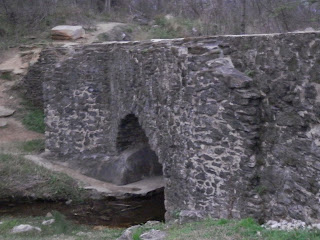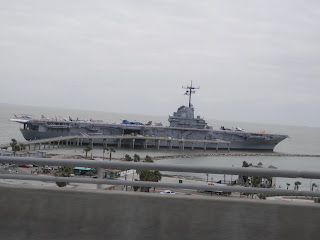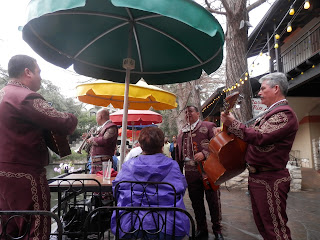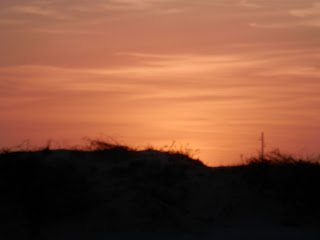We toured the outside grounds and took pictures, with the idea of returning the next day to see the inside of the Alamo, which we did. This tree was 40 yrs old when it was moved here in 1912 by a wagon pulled by 4 mules. People said it would not grow, but today it is 12 feet in circumference and it's main branches are over 50 feet long.
This was the church area and it held the gun powder during the siege. It is now the gift shop.
This was pretty cool and I could just see the people setting around placing these soldiers, horses, canons etc up to show the fighting at the Alamo. The gun smoke is actually a cotton ball pulled thin.
Back side of the Alamo
This is the front door of the Alamo where you can see some of the bullet holes.
Like I said we came back the next day and got right into the Alamo. You will probably not see many pictures of the inside of the mission itself because cameras are not allowed. Well look fast I didn't see the sign, but, I heard someone telling someone else no pictures, but I had already taken mine, so I quickly put mine away. I was not impressed with the inside.
The first mission in this area was the Mission San Antonio de Valero, better known as the Alamo, founded in 1718. The Mission Nuestra Senora de la Purisima "Concepcion" served the area around 1731. If you look closely (didn't show up on camera) on the building you can still see some of the original colorful geometric designs that once covered the surface.
This is part of the walls that surrounded the mission.
Here you can see the squares on top of the arch way where the soliders would crouch and put there rifles out one of the four windows .
We were very fortunate to arrive after closing time, as usual. They were having a wedding rehearsal this evening and the wedding coordinator let us in and gave us a private tour. In the picture below you can see a door on the middle right that is where the father would enter the church and walk down steps behind the alter.
These are the big heavy doors at the back of the church. You can see day light through the door in several places.
This is Phil trying to get in the back door I guess.
Hey look I was along on this trip. We took a picture of a young couple who snuck in the gate same as us and they wanted to take our picture too. Look at the carvings around the door.
This is the 'Rose window' look at the fine detail and the craftsmanship of the artisans who worked on the missions.This is the Mission San Juan Capistrano established in East Texas and moved here in 1731.
This is the Mission San Francisco de los Tejas in 1690, the oldest of the East Texas Missions and was moved here in 1731. It was renamed San Francisco de la Espada. I was fascinated by this small church. The arch way around the door is a broken arch many say it was a mistake by the builder.
These Missions depended on the water supply to the fort for there survival so they built acequia madre (mother ditch) systems. The Mission Espada has the best-preserved system built in 1745 and still diverts river water today. It is the oldest Spanish aqueduct in the United States.
The picture above is the top of the picture here on the bottom. Boy does that make any sense?
I really enjoyed seeing the Missions. We were only able to go into the first one but that was OK. We saw 3 of the Missions still have Fathers living on the property, and they have personalized them in some way with flowers, lights and music. Very peaceful in the setting of the sun.
Our visit to the Alamo was all the more exciting because our grand daughter Ivy had been studying the Alamo in school the past week and she knew all about the Travis Letter. Thanks for sharing your information with us Ivy.























































